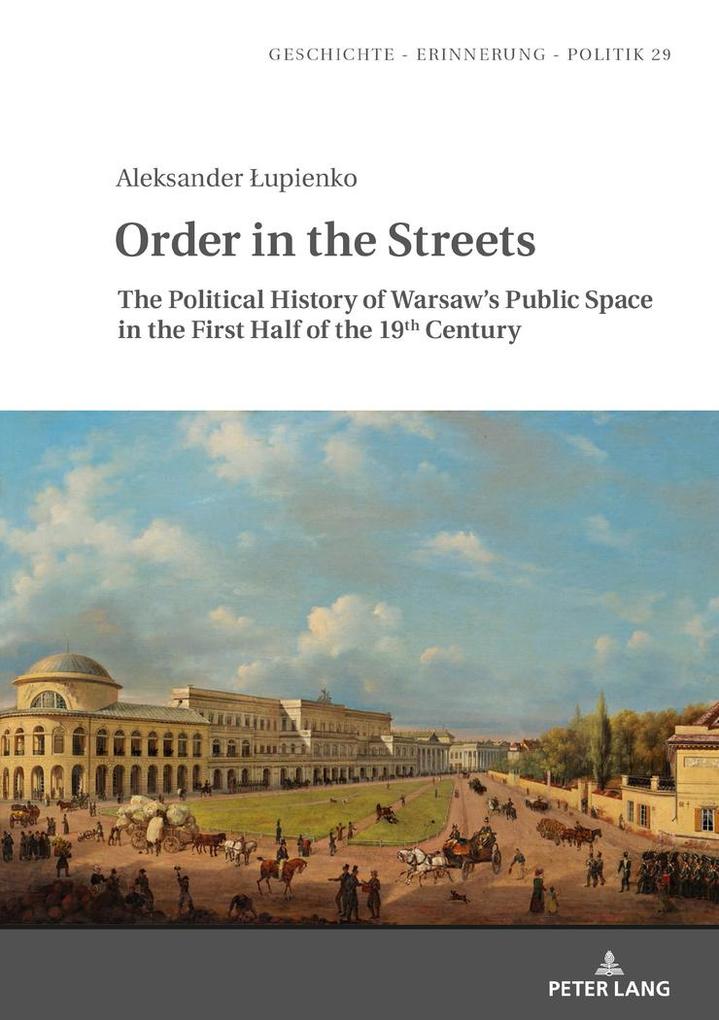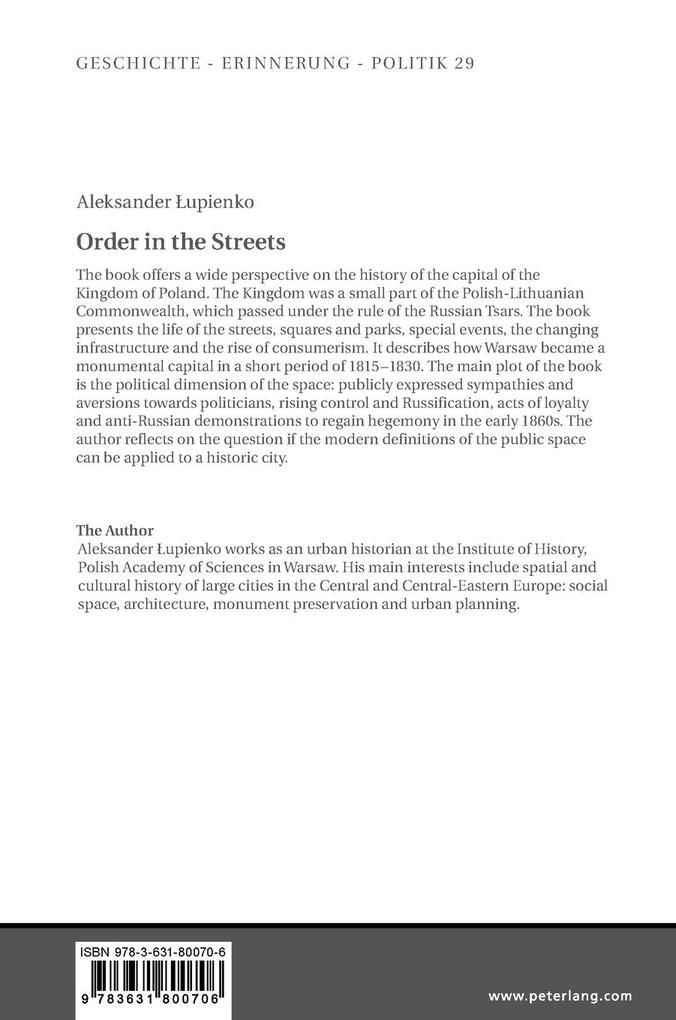
Zustellung: Fr, 18.07. - Di, 22.07.
Versand in 7 Tagen
VersandkostenfreiBestellen & in Filiale abholen:
The book reflects on the functioning of the public space in the nineteenth-century city on the example of Warsaw. Delving into the everyday realities and the symptoms of modern political life in the streets and squares, the author describes the conditions of a properly functioning public space, including the impact of the political regime.
The book offers a wide perspective on the history of the capital of the Kingdom of Poland. The Kingdom was a small part of the Polish-Lithuanian Commonwealth, which passed under the rule of the Russian Tsars. The book presents the life of the streets, squares and parks, special events, the changing infrastructure and the rise of consumerism. It describes how Warsaw became a monumental capital in a short period of 1815-1830. The main plot of the book is the political dimension of the space: publicly expressed sympathies and aversions towards politicians, rising control and Russification, acts of loyalty and anti-Russian demonstrations to regain hegemony in the early 1860s. The author reflects on the question if the modern definitions of the public space can be applied to a historic city.
Inhaltsverzeichnis
The rise of Warsaw as a monumental capital - Political functioning of the public space - Demonstrations and contestations - Celebrations, feast and everyday activity - Rising consumerism - Expressions of loyalty and opposition in the streets - Fight for hegemony over the public space
Produktdetails
Erscheinungsdatum
23. März 2020
Sprache
englisch
Auflage
1. Auflage
Seitenanzahl
272
Reihe
Studies in History, Memory and Politics
Autor/Autorin
Aleksander Upienko
Übersetzung
Jarek Garliski
Verlag/Hersteller
Produktart
gebunden
Abbildungen
24 Abb.
Gewicht
468 g
Größe (L/B/H)
216/153/20 mm
ISBN
9783631800706
Entdecken Sie mehr
Bewertungen
0 Bewertungen
Es wurden noch keine Bewertungen abgegeben. Schreiben Sie die erste Bewertung zu "Order in the Streets" und helfen Sie damit anderen bei der Kaufentscheidung.










